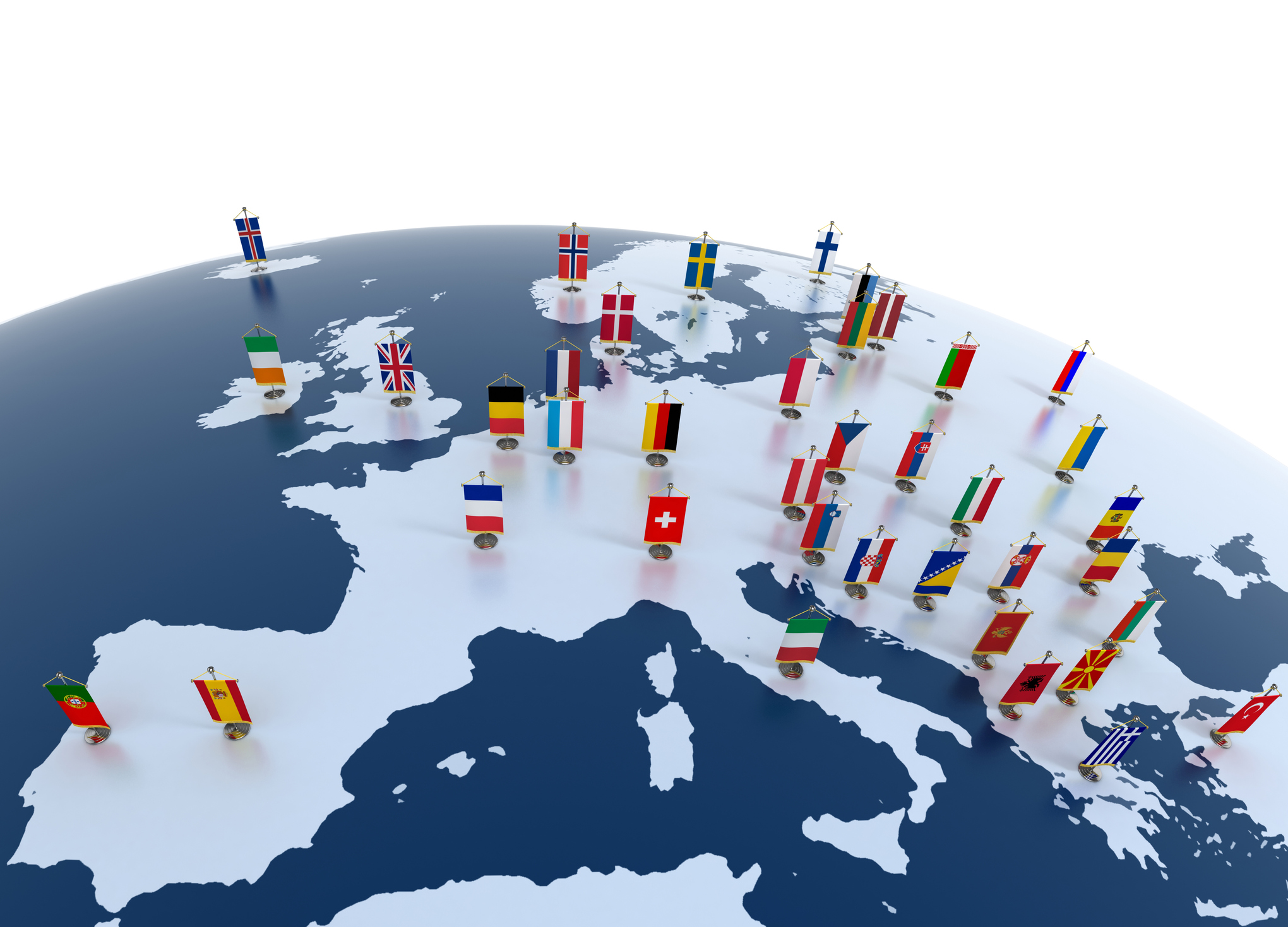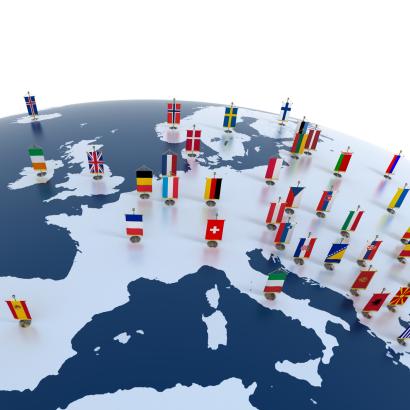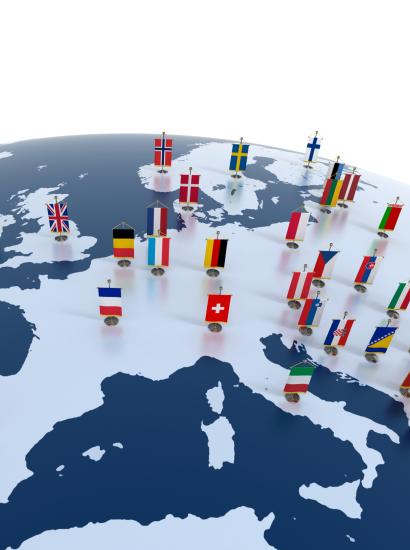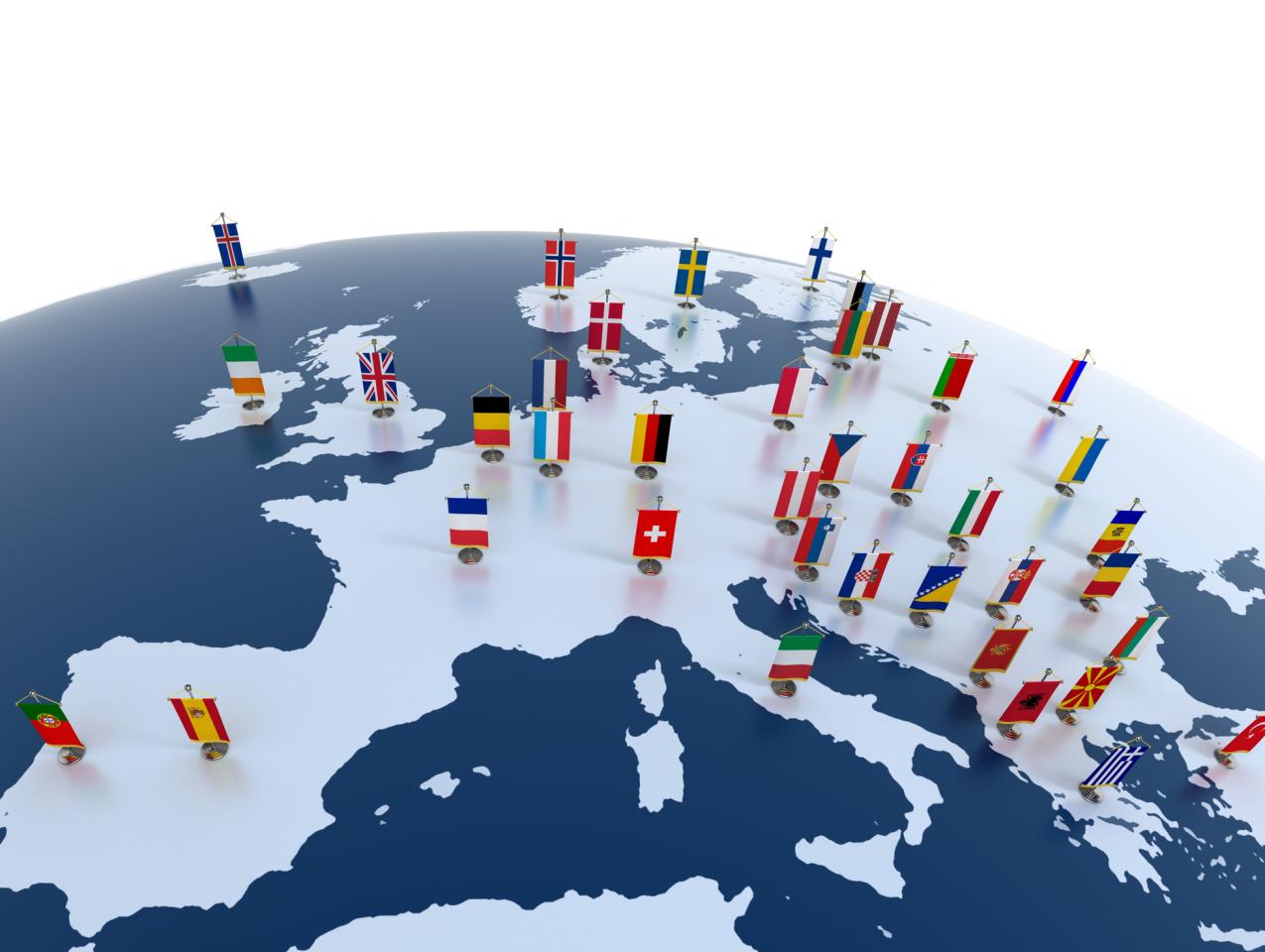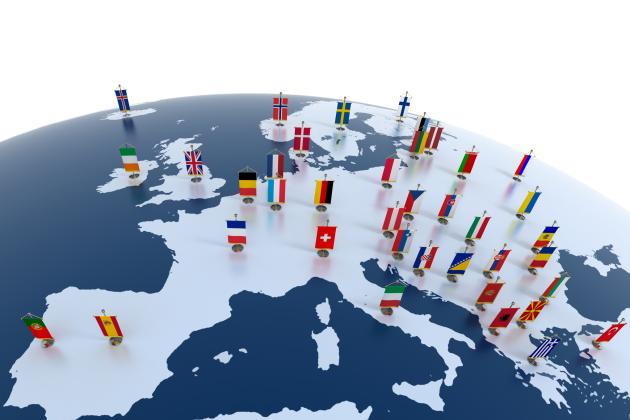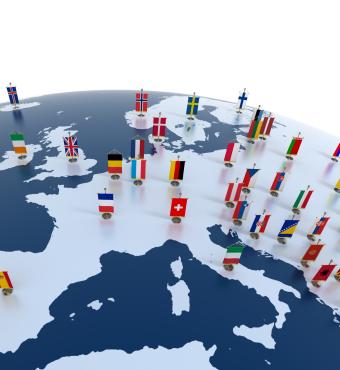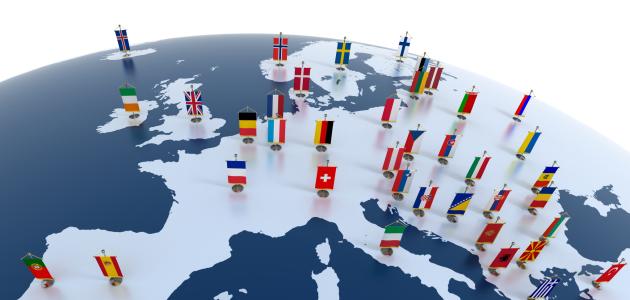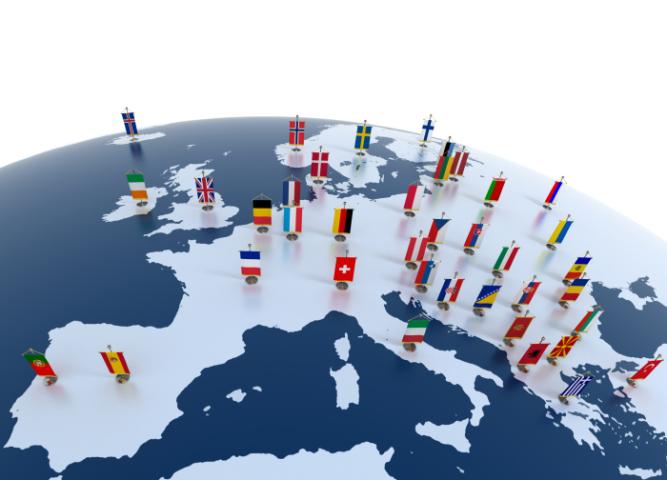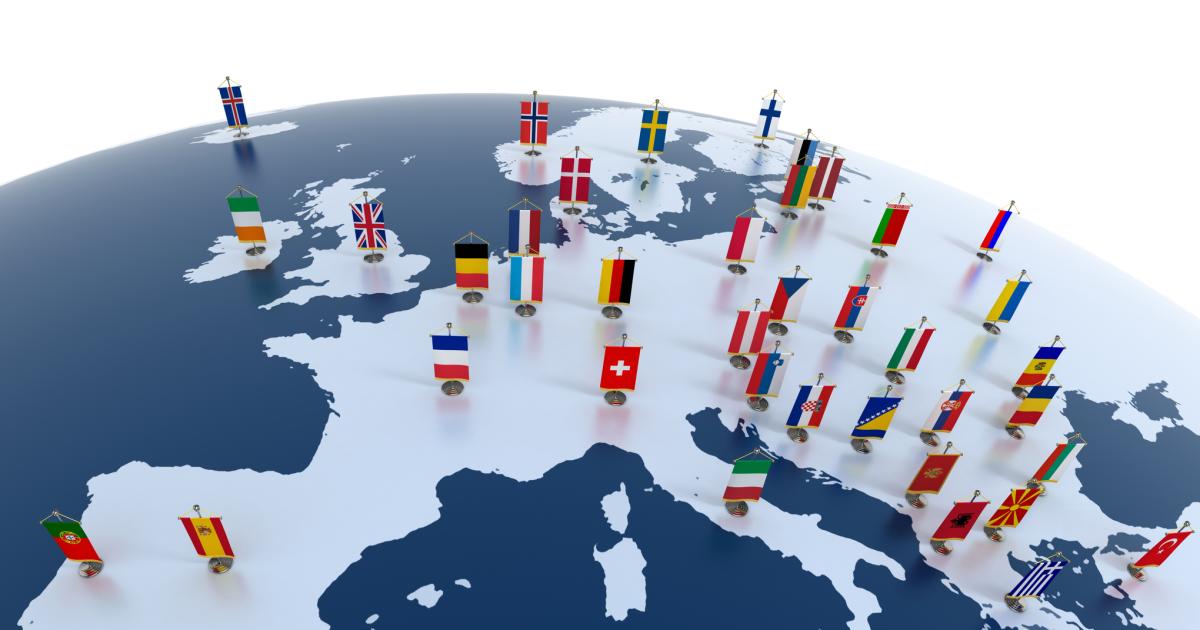In December, a group of the French protesters known as gilets jaunes were stopping motorists at a traffic circle where the N151 meets the D951A, next to a forested hill in Burgundy. The gilets, so called for their distinctive yellow traffic-emergency vests, had banded together a month before to rally against a tax on diesel. Over several weeks, though, their grievance had grown less political (about this or that policy) and more existential (about the impossibility of making ends meet in France’s boondocks).
Yellow-clad Jerome, an ambulance-driver by trade, asked a visitor whether he’d been to nearby Clamecy. It’s magnificent, came the reply. The half-timbered houses…The birthplace of the novelist Romain Rolland…The renowned 13th-century Gothic church, tucked between the meandering Yonne and a smaller river called the Beuvron.
Jerome knew. He grew up there. “Did you really look at it?” he asked. “It’s dying.”
And it is. Clamecy had 5,900 people in the mid-1970s, and factories to employ them in, but it only has 3,900 people now, and most of them are old. Beautiful though its streets may be, attractive though it is to Parisians seeking country homes, most of its shops are deserted, and on weekdays so are most of its squares. You can buy a two-story house in the center of the nearby village of Dornecy for €14,000—about $16,000. Much of rural Europe is undergoing a similar transformation.1 The cyber-rental agent Airbnb is trying to rally its clients to restore the village of Grottole, which sits atop a mountain in Basilicata, near the instep of the Italian boot.2 Grottole had 13,000 people in it during the Middle Ages, but it has 300 now, along with 600 abandoned buildings. In early 2018 the mayor of Ollolai, in Sardinia, put 200 houses on sale for one euro each in hopes of stabilizing the village’s population (which had fallen from 2,250 to 1,300 since the 1960s) and attracting the investment necessary to keep its beautiful housing stock from deteriorating.3 The same thing is happening in the Sicilian town of Sambuca.4 In Spain there is a real estate company called Aldeas Abandonadas that sells not abandoned houses but whole abandoned villages, starting at around $35,000. There are 3,600 such abandoned settlements in the region of Galicia alone.5
The population decline now underway is not Europe’s most spectacular problem. It is, by its nature, something that happens not with a bang but a whimper. It may nonetheless be Europe’s most deep-rooted problem, and its most serious. It touches everything. A declining population is by definition an aging population, straining the 20th-century welfare state on which the European way of life rests. A decline in the number of workers and taxpayers makes government debt harder to service particularly in countries—such as Italy—that are heavily indebted to begin with. For a long time, the need for infusions of labor and tax revenue led Europe’s politicians to turn a blind eye to a consistently unpopular century-long wave of mass immigration. In Europe, immigration means Islam and racial difference, the accommodation of which brings its own costs.
This paper is about the causes and dimensions of Europe’s demographic crisis; the consequences of resorting to immigration to solve it; the special implications of Europe’s proximity to fast-growing Africa; the international dimension of demographic decline; and how differing ways of addressing it threaten to pull apart the European Union, which, at the turn of 2019, was 28 countries strong.
How Grave Is Europe’s Demographic Crisis?
Europe is shrinking at alarming speed. The European Union reached a population of 509.4 million in 2015, its constituent countries having added about a hundred million people since the early 1960s. That will turn out to be a peak of sorts. Eurostat, the statistical agency of the EU, predicts that its population will likely creep up to 518m by the year 2080. Europe will need to import people in order to do that. Without migration, Eurostat shows, Europe’s population in 2080 would fall back down to 407m, roughly where it was in the middle of the last century.6
Other things being equal, for a population to remain stable, the average woman must have about 2.1 children in the course of her life. At that level she can “replace” herself and her husband. Europe’s birthrates fell sharply in the 1970s and towards the end of the century reached steady and sustained lows. Women in Italy, Spain, and Germany have averaged 1.3–1.4 children in recent decades, with Spain briefly plumbing a level of 1.1.7 That means trouble. Each generation is followed by another that is only two-thirds its size.
For a long time, Europe’s demographic downward momentum was disguised by immigration and by increases in longevity: The population stayed the same even as birthrates fell. Those increases in lifespan have now worked their way into the system, the median age has risen sharply, and the role of migration in filling gaps has become more obvious. Germany and Japan, in which half the population is over 47, are now the oldest societies the world has ever known, with Italy and Austria close behind them. (Perhaps a theory has been developed about why the four countries that hold that distinction should be the ones that made up the defeated Axis in World War II?) On top of this, there came in 2015 a cruel surprise: Life expectancy in the EU began to fall.
Americans are not immune to these trends. Their life expectancy has regressed in recent years, too, due to falling longevity among whites. (In the landmark 2015 study that first sought to quantify and explain the decline, Princeton economists Anne Case and Angus Deaton ascribed it to addictions and mental illness, citing prominently “the increased availability of opioid prescriptions for pain” and the falling price and rising potency of heroin.) 8 Certain geographic regions have seen precipitous drops in fertility: In 1947 there were 55,000 people born in West Virginia, in 2018 only 18,000.9 But the country is far from any nationwide demographic trend that would point towards depopulation.
In Europe, by contrast, such trends have been in place for decades, and are well anchored. (Germany has had more deaths than births since 1972.)10 According to the late historian Walter Laqueur, the present auguries of demographic decline should not to be confused with early-twentieth-century doom scenarios, some of which might come to pass and some of which would not. “Yesterday’s prophets were dealing with future trends,” Laqueur wrote, “whereas those concerned with today’s Europe are dealing with developments that, for the most part, have already happened.”11
Causes of Demographic Decline
Most discussions of Europe’s falling birthrate allude to the “second demographic transition.” As countries grow more modern and more rich, they tend to have fewer children. France began experiencing a birth dearth early in the 19th Century. Until recently, the theory of demographic transition appeared robust in the extreme. If one looked at advanced countries a generation ago their total fertility rates clustered around 2 children per woman. Countries in the Third World had fertility resembling the Europe of centuries before.
Now the demographic transition looks slightly more mysterious. The United States has always been as “modern” as Europe, and richer, too, yet its total fertility rates were considerably higher. Nor could a greater American religiosity explain it. There are countries that have seen their fertility rates fall below replacement levels and even below European levels—before those countries acquired a European standard of living. Iran’s theocracy is one of these, with a total fertility rate of 1.66.12 Within Europe, richer, more modern, more secular countries are often more fertile than countries in the economic and technological hinterland. French women have more children than Albanians. Swedish women have more children than Greeks.13
It is German social scientists who have been most sophisticated in explaining why some countries, under modern European conditions, might have more children or fewer. There are several reasons for their expertise: First, the excellent demographic statistics available through Germany’s federal statistical office, the Statistisches Bundesamt. Second, the size of the problem that demographic decline represents for Germany. Finally, a serious judiciary engagement with the question of demography, through cases comparing the legal position of childlessness with that of childbearing. In the so-called “Long-Term Care” case of April 3, 2001,14 the country’s supreme court, the Bundesverfassungsgericht, ruled that, in a modern welfare state established on the German model, people who do not raise children enjoy an unfair advantage over their fellow citizens who do, because the latter make a “generative contribution” as well as a financial contribution to the functionality of a pay-as-you-go welfare state.15
As the court reasoned then, and as economists such as Hans-Werner Sinn of the Ifo Institute in Munich16 and politicians such as Christian Democrat Roland Koch have since explained, in a pay-as-you-go welfare state, one generation’s pensions are paid for by the work the next generation does. Think of that younger generation as a “machine” that doles out money. Every member of the seniors’ generation has the same right to collect money from it. But only a subgroup of the seniors paid the entire, prohibitive expense of setting that machine up, by having, rearing, and educating children. The childless never had to make that investment in the pensions they now collect.
In every generation, parents have hoped that children would provide them with support when they themselves were too old to work. In this sense, what Social Security and other forms of state-sponsored pension do is pool the risk of childlessness. Doing that does not eliminate the reasons for having children. But it eliminates the economic reasons for having children. In fact, Sinn explains, it turns most of the incentives for procreation upside-down:
“Earlier, childlessness was a threat to one’s own life that was to be avoided under all circumstances. But today, childlessness brings a massive material advantage, which more and more people are claiming. The new Volkswagen Golf, the vacation in the Maldives…these can be financed from savings that need not be spent on children’s education, or from what the wife can earn by choosing a career instead of children…The threat of childlessness, of course, is just as present as it was back then, except it is transferred onto the society as a whole.”17
The point is fascinating: Most Western pension systems were set up as if they would have no effect on the size of the pool of those paying into the system. But in fact they incentivize childlessness. Once the society adjusts to these new incentives, by reducing births, the pool of support shrinks and the system must be reformed, whether by lowering benefits, raising retirement ages (as Germany is now gradually doing, from age 65 to age 67 by the year 2029), raising contributions, or recruiting new payers into the system (as Angela Merkel’s massive admission of Middle Eastern migrants into the country did, among many other things). Germany took one or another of these budget-balancing steps in 1992, 2001, 2004, 2007, 2014, and 2015.
In the economy as it is now set up, children “cost money, limit consumer choice and knock one down the social ladder,” Sinn explains.18 This is the world that Harvard Law School bankruptcy expert (and now U.S. Senator) Elizabeth Warren described in The Two-Income Trap, the 2003 book that first brought her to national political attention. Relying on a vast database of bankruptcies she had assembled, Warren wrote: “Having a child is now the single best predictor that a woman will end up in financial distress.”19
Sinn’s explanation of where the social problem of demographic non-replacement comes from is not the only explanation possible. It might be caused not by efforts to tame the capitalist system (social-democratic welfare states) but by the capitalist system itself. Thus the writer Thilo Sarrazin20 points to the arrival of a textile industry to explain the fast-changing demographic profile of Bangladesh, which has seen its total fertility rate fall to Western levels (2.1) even while its per-capita GDP remains at only $1,516 a year, contrasting it with less industrialized Pakistan, where fertility rates remain at 3.5.21
The German demographer Herwig Birg takes up such a possibility, too, through what he calls the “biographical theory of fertility:”
“In economies with dynamic labor markets, a high degree of professional mobility and flexibility is expected of individuals. They must avoid unbreakable commitments and constraints on their mobility, above all ties to a life-partner or the duties of parenthood. To do otherwise would be to put their competitiveness in the labor market at risk.”22
Fixing this particular problem, Birg wrote, would require a “radical restructuring of the economy.”23 European societies have chosen a different solution: immigration.
Immigration, and the Special Case of Africa
It may be wrong to speak of mass immigration as a choice. Certainly, no western European country over the last half-century has managed to do without it, despite consistent and overwhelming public opposition to it. The half-century over which European native fertility has been below replacement has also been a half-century of mass immigration, both planned (as in the German recruitment of Turkish labor for industry and mining) and unplanned (as in the sudden rush of “harki” loyalists into metropolitan France after the overthrow of French rule in Algeria in 1962).
Quantifying the change is not always straightforward: In the quarter-century since the move of European countries towards an “ever closer union” under Brussels, intra-European immigration has come to seem less “foreign,” and some ardent European federalists have ceased to call it foreign at all. Some countries offer easier paths to citizenship than others, causing migrants’ offspring to disappear into the “native” part of the population quickly, at least statistically. Since all of these countries are declining demographically, migration within the EU is not a solution to anyone’s demographic problem, so we will focus on non-EU immigration.
Non-EU immigration has run in the millions for many years. This was true even before 2015, when Angela Merkel extended an invitation to Syrians fleeing civil war and got a million migrants from throughout the Muslim Middle East. Back then Germany was receiving about 500,000 non-Europeans a year, Britain 300,000, Italy 200,000, France and Spain 150,000 apiece. Sweden was, even more than Merkel’s Germany, the model of a European country that welcomed migrants, receiving annually just under 100,000, about 1 percent of its population. Sweden had been doing it longer than any other country, too. It accepted refugees from conflict after conflict, beginning modestly with the acceptance of Jewish refugees from Poland in 1968, but then broadening out to accept a massive refugee-hosting role during the Balkan conflicts of the early 1990s. In 2015, when Syrian refugees began their overland march to Europe and others followed in their wake, the Scandinavian countries were especially open-hearted. Denmark accepted 30,000 of them, Norway 28,000, Finland 6,000. Sweden took in 163,000.24
Such demographic shocks almost inevitably bring cultural conflicts. Sweden is in a situation that no modern country in the West has ever found itself in. If the United States by 2016 considered itself overburdened with a population that was 13 or 14 percent25 foreign-born, so desperately overburdened that it would turn to Donald Trump for leadership, how can we expect tiny Sweden, a rustic monoculture until the day before yesterday, to behave now that it has a population of which almost 19 percent has been born abroad. In many European countries there is talk about how, if migration isn’t slowed down, the country will eventually become unrecognizable. In Sweden, it may be too late to avoid that. Sweden’s Muslim population is now 8.1 percent.26 According to the Pew Research Center, Sweden will reach 30 percent Muslim by 2050 if refugee flows continue at the current rate and 21 percent Muslim in the unlikely event that they stop altogether.27 Already, foreign-born mothers account for more than 30 percent of Sweden’s babies.28
The impact on European culture of mostly Muslim Middle Eastern and North African newcomers has long haunted the European political imagination. Only in the last decade or so has it dawned on migration specialists that sub-Saharan Africa might be the source of an even larger disruption.
Africa is adding people at a rate never before seen anywhere on the planet. In 1960, the so-called “Year of Africa,” the continent had 278 million people. Its population has since quintupled to 1.3 billion—and by mid-century, only a generation from now, it will double again,29 the United Nations Population Division predicts. The drama lies not only in the absolute numbers but also in their interaction with the opposite dynamic of western Europe, where the population will fall to a doddering half billion or so. The closer you look, the more disorienting is the change. In 1950 the Saharan country of Niger, with 2.6 million people, was smaller than Brooklyn.30 In 2050, with 68.5 million people, it will be the size of France.31 By that time, Nigeria, with 411 million people will be considerably larger than the United States. In 1960 Nigeria’s capital, Lagos had only 350,000 people. It was smaller than Newark.32 But Lagos is now sixty times as large as it was then, with a population of 21 million, and it is projected to double again in size in the next generation, making it the largest city in the world, with a population roughly the same as Spain’s.
So will these young people get to work to build a new Africa? It is hard to imagine how all of them could be engaged at that task, since the continent would need to add half a billion jobs to make that possible. It is likely that many will seek a wealthy part of the world to migrate to and deliver remittances from. That could be either Europe or the United States, but of those two continents, only Europe is easily reachable without an airplane.
This migration is still new and relatively small, based as it is on a primitive traffic across the Mediterranean via inflatable rafts and rescue boats. But of the 10 fastest-growing sources of emigration by country, eight are in Africa. Last year (2018) emigration worldwide grew about 17 percent. In those eight African countries it grew by more than 50 percent. A third of the people in Nigeria, Ghana, and Senegal say they already have plans to emigrate.33
It is already important enough to change European politics. Until the eve of Italy’s March 2018 elections, migrants were crossing the Mediterranean at the rate of 200,000 a year. The almost daily arrival of hundreds of migrants was large enough to help bring to power a populist coalition with a strongly anti-immigration prime minister, Matteo Salvini. And a ban on landings of migrant boats in Italian ports, because it led migrants to try their luck in Spain, contributed to a stunning upset victory for an anti-immigration party in Andalucía at year’s end.
The journalist and Africa scholar Stephen Smith, who writes in French, published an extraordinary book on sub-Saharan migration and its likely evolution, called “The Scramble for Europe.”34 Smith lays out several ways to model how many Africans might ultimately come. He notes that between 1850 (when Europe had 200 million people) and World War I (when it had 300 million), Europe sent 60 million people abroad, most of them to the United States. Mexico had 30 million people in 1955,35 saw its population double to 60 million by 1975, and sent 10 million people to the United States in the generation that followed. Today, 37 million Mexican-Americans make up 11.2 percent of the U.S. population.36 If Africa followed the Mexican example, Europe’s African-descended population could reach 150 million by mid-century.
Migrants can seem like irresistible forces, avalanches, but their specific direction can be quite contingent. There are two preconditions for a truly large-scale migration—first, that the migrants have both motive and economic means to leave their homelands. Second, that there be a community, most likely a diaspora community, somewhere in the West ready to welcome the newcomers, and clear the way for them politically. The example of Minnesota will suffice to show how this works. That state has more than a quarter of the U.S. Somali population because a handful of businessmen from Mogadishu settled there in the 1980s.37 Once those conditions—the money to leave with and a community to land with—are met, there is little to dissuade the would-be migrant. Yes, thousands have drowned trying to cross the Mediterranean to Europe on rafts: the odds of death are about 1-in-300. But that might not be such a deterrent to a migrant who makes a rational calculation, Smith has argued: If you are a woman in South Sudan, your odds of dying in childbirth are 1-in-60.38
Policy Misunderstandings
European policymakers often misunderstand the dynamics of modern mass immigration. This is not surprising. A people’s worldview is dependent on its demography. The “common sense” of a society is made up of certain age-related emotional dispositions, or intellectual inclinations:
- A certain number of people exhibit the caution (or wisdom) of old age.
- A certain number exhibit the pragmatism (or flexibility) of middle age.
- A certain number exhibit the impatience (or passion) of youth.
In most societies at any given time, those three dispositions tend to be in a kind of balance. When we look at contemporary Africa and Europe we are looking at two continents that are, by historical standards, wildly out of balance, age-wise. It would be prudent to expect both sides to react in ways that don’t resemble our inherited conceptions of society rationality. A society as young as Africa now is—and the modern West has never encountered one—will likely be demanding, rash, and ready to provoke crises. A society as old as Europe now is—and we’ve never known one of those either—will be short of energy, short of idealism, and more likely to explain away crises than to respond forcefully to them.
Indeed, Europeans have been inclined to ignore the nature and minimize the extent of their demographic problem. They talk often of migrants being drawn to European “values.” Some may be. But just as many are probably drawn to Europe’s combination of wealth and weakness. Europeans are complacent, too, when they say that immigration is lower now than it was in 2015. They fail to see that migration is a spasmodic thing. It hinges on events over which Europeans have no control. The massive overland flows of 2015 were set off by the Syrian civil war, a geopolitical catastrophe that confronted Europeans with the snap choice: whether to admit millions of irregular refugees or be seen to stand by indifferently as millions of civilians ran for their lives.
That kind of choice will confront Europeans again. The precipitating catastrophe need not involve war. It could involve climate change. Consider Lake Chad. Stephen Smith notes that tens of millions of people are dependent on Lake Chad in one way or another. But the lake is drying up. It is barely a tenth the size it was in 1960. it will not be there forever.39
Where military conflicts do arise, both demography and international refugee treaties will interact to make it likely that those conflicts will bring more migrants to Europe. War tends to be made be made by young men. The median age of sub-Saharan Africa is 19.5, versus 38 in the United States and 43 in Europe (with some countries in Europe moving steadily higher).40
The demographer Gunnar Heinsohn has invented something called a “war index.” It uses a society’s ratio of men aged 15–19 to men aged 55–59 as a proxy for that society’s likelihood to wage war. It is based on the idea that the group in their late fifties will soon retire, leaving behind a certain number of “places” for the teenagers. The index is not perfect—it takes no account of economic transformation, for instance, or the effect of women in positions of power—but it makes a rough and reliable kind of sense. A low ratio means the field won’t be very crowded for newcomers to the labor market. In Germany, where, as we have said, one generation is about a third smaller than the next, the “war index” is 0.66. Lack of grievances is not the only reason such societies tend to be more pacifistic than the norm. Where families have only one or two children, there is a good chance that a soldier who dies in battle will bring the extinction of his family.41 Heinsohn’s model may help explain why, even at a time of escalating political upheaval and interethnic tension in Europe, violence is still near historic lows.
In dozens of African countries, things look very different. There the index is over five. Where there are five young men for each position that comes open, there is a lot to fight over. As Heinsohn noted in a provocative 2018 article, European punctiliousness interacts with the UN’s 1951 Refugee Convention in such a way as to draw people from war zones. Once “youth bulge” countries erupt into civil war, young people there who would not previously have been admitted to Europe on economic grounds acquire grounds to claim either protection or asylum.42 Barring wholesale change in European customs, virtually all of those who arrive this way will stay permanently. People arriving as immigrants from war zones tend to be expensive. Many need either to be carefully monitored (because they have experience using arms) or expensively cared for (because they have been traumatized by arms). Welcoming them may seem like Christian charity to those politicians who make the offer. But it diverts resources that might otherwise have been spent on taxpaying citizens, or on recruiting more economically compatible migrants.
Europeans simply do not understand the scale of the challenge that Africa’s demography poses. To repeat: Africa is set to double in size. In 1960, Africa had 278 million people—it was a little more than half the size of Europe. A generation from now, in 2050, Europe will have its 500 million or so people, and Africa will be five times as large, at 2.47 billion. It will have as many children age 9 and under as Europe has people.43 More consequentially, it will have as many military-aged men (aged 15-40) as Europe has people.44
In Italy, in Spain, and wherever African migrant boats confront European law enforcement, press coverage tends to assume that what is at issue is whether to treat decently a “handful” (manciata) of Africans simply looking for a better life. That is wrong. What is at stake is a decision about whether to set in motion a process that has the potential to bring hundreds of millions of people in a very short time—a process that Europe, once engaged in it, will be too weak to stop. When we are discussing migrations of that scale, questions of European “values” disappear. The question of whether Africans can assimilate into European societies is replaced by the newer one of why they would wish to, since their own, familiar cultures will have a preponderance, at least in the places they choose to land.
Paths for Europe
We cannot think of international migration as an exogenous phenomenon that strikes European societies out of the blue. It is one facet of an international system that has been evolving for decades and that Europeans once played a large role in shaping. The differences in fertility that we discussed above are dramatic not just between European countries and the rest of the world but within European countries. In the parts of Europe that have seen the most non-European immigration, fertility rates are considerably higher than they are in the upper-middle-class command centers of the global economy: 2.47 children per mother in suburban Seine St-Denis, versus 1.55 in central Paris; 2.17 in suburban Barking and Dagenham, versus 1.32 in Kensington and 1.24 in Westminster.45
This international system, whatever it may have done for GDP over the last forty years, has had the effect of splitting the West into two parts—economically, sociologically, and (therefore) ideologically.
In the globalized parts of Western cities, house prices have shot up beyond levels that anyone considered sane a few years ago. It was once thought a law of nature that the average family would pay three- or four-years’ income for its house. Today, the average house in England and Wales goes for eight times a year’s earnings, according to the British real-estate service Hometrack.46 In Oxford a house costs 13-years’ income, in London over 14.47 When we consider Europe’s participation in the global economy, we tend to think of it as a boom area, a powerhouse, because we consider places like these. We are slower to consider those beautiful small towns in Burgundy that are being outright evacuated, or those villages in the south of Italy where the town council puts houses on sale for €1—“the price of an espresso,” as a sad article in London’s Observer put it, although the buyers are expected to invest, sometimes heavily, in such properties’ restoration.48
Every European country is a bit of both. Spain has seen construction booms coincide with the wholesale abandonment of its towns. Eighty-nine percent of Greeks and 88 percent of Spaniards consider outmigration a very big or moderately big problem.49 Hungary and Italy are fighting to stave off both immigration and emigration at the same time. As Italy closes its Southern ports to African migrants, its Southern villages empty out at the rate of 50,000 people a year. The demographer Massimo Livi-Bacci notes that the exodus from the Italian south has been as high as 150,000 a year, but that “in the past, emigration arose from exuberant generations of young people” whose numbers were growing at the rate of 1 or 1.5 percent a year.50 Things are different now. Those who do not rule the global economy as entrepreneurs must endure it as discards, and they are numerous. They can in many countries be an electoral majority, as Europeans and Americans have recently discovered.
Europe’s demographic crisis has wound up both a symptom and a cause of division. In 2000, the UN Population Division published a report that directly addressed the most pressing issues of European population. Looking ahead to 2050 and breaking down the UN’s numbers by country, demographer Herwig Birg found that Germany, in order to keep its population constant, would require 17.2 million immigrants. In order to keep its working population constant, it would require 24.3 million immigrants. In order to keep the ratio of retirees to workers constant, it would require 181.5 million immigrants.51 That last figure was controversial—it was two or three times the entire population of Germany. But probably the most controversial thing about the UN report, in this context, was its title: Replacement Migration.52
That title became a symbol of the way European publics were starting to reconsider the demographic change going on around them. In the 21st Century they grew more fearful, less inclined to accept official assurances that the country’s culture could survive a large influx. Many, especially in France, came to talk of immigration itself as Le grand Remplacement, after the title of a book by Renaud Camus. Anti-immigrant populist parties arose in almost every country of the European Union, insisting that governments and businessmen renounce mass immigration as a policy of first resort. And European leaders insisted even more resolutely that migration was simply part and parcel of a modern global society, an understanding that would be codified in the United Nations “Migration Pact” of 2018. Half a dozen European governments refused to sign. The populist government of Italy had come to power warning that Italy, as the closest European country to the Libyan trans-Mediterranean migrant route, was bearing an intolerably large burden in processing an entire continent’s newcomers. The four countries of the so-called Visegrad Group (Hungary, Poland, Slovakia, and the Czech Republic) seemed to be repudiating altogether the modern European willingness to welcome migrants from various cultures, in the wake of Angela Merkel’s attempt to distribute throughout Europe the migrants she had invited in 2015. Nor were they alone. Impatience with migration was crucial to victory for the “Leave” side in Britain’s decision by referendum to exit the European Union, and the Alternative for Germany, a small party launched to protest Germany’s role in the financial rescue of southern European countries such as Greece, embraced immigration restrictions and suddenly found itself the country’s leading opposition party.
The discussion about demography that arose in the 21st Century was not the one European visionaries thought they would be having at the time of the Treaty of Rome (1957) or the Treaty of Maastricht (1992). Population and with it migration had somehow become the central issue in European politics. By the second decade of the twenty-first century there were two radically different paths to dealing with Europe’s crisis:
First, to keep doing what Europe had been doing since the 1960s, accepting that we lived in an age of mass migration and trusting in integration to make it manageable. In recent years, this has been the position of Germany’s chancellor Angela Merkel, France’s president Emmanuel Macron, and virtually all members of the European Union commission.
Or:
Second, stop or slow migration, trusting in a combination of inducements to natality, longer working hours, labor-saving technology, and new ways of thinking about the economy, including the vogue for “benign de-growth” (décroissance heureuse). Italy’s interior minister, Matteo Salvini, and Hungary’s prime minister, Viktor Orbán, became the symbols of this approach.
It would be wrong to speak of either these two options as a “solution.” They are policy choices, made in ways consistent with different peoples’ political cultures—and all the peoples of Europe remain democratic enough to be trusted to make such choices. But by the middle of the second decade of the 21st Century, demographics had pushed another basic question to the fore: What do we mean when we speak of “the peoples of Europe?” To the consternation of the European Union’s leaders and backers, many of the continent’s citizens seemed more confident to answer that question through their old familiar national democracies and their old familiar national identities. That is a problem for another day, a day that appears to be approaching quickly.
Christopher Caldwell is a contributing editor at the Claremont Review of Books.







